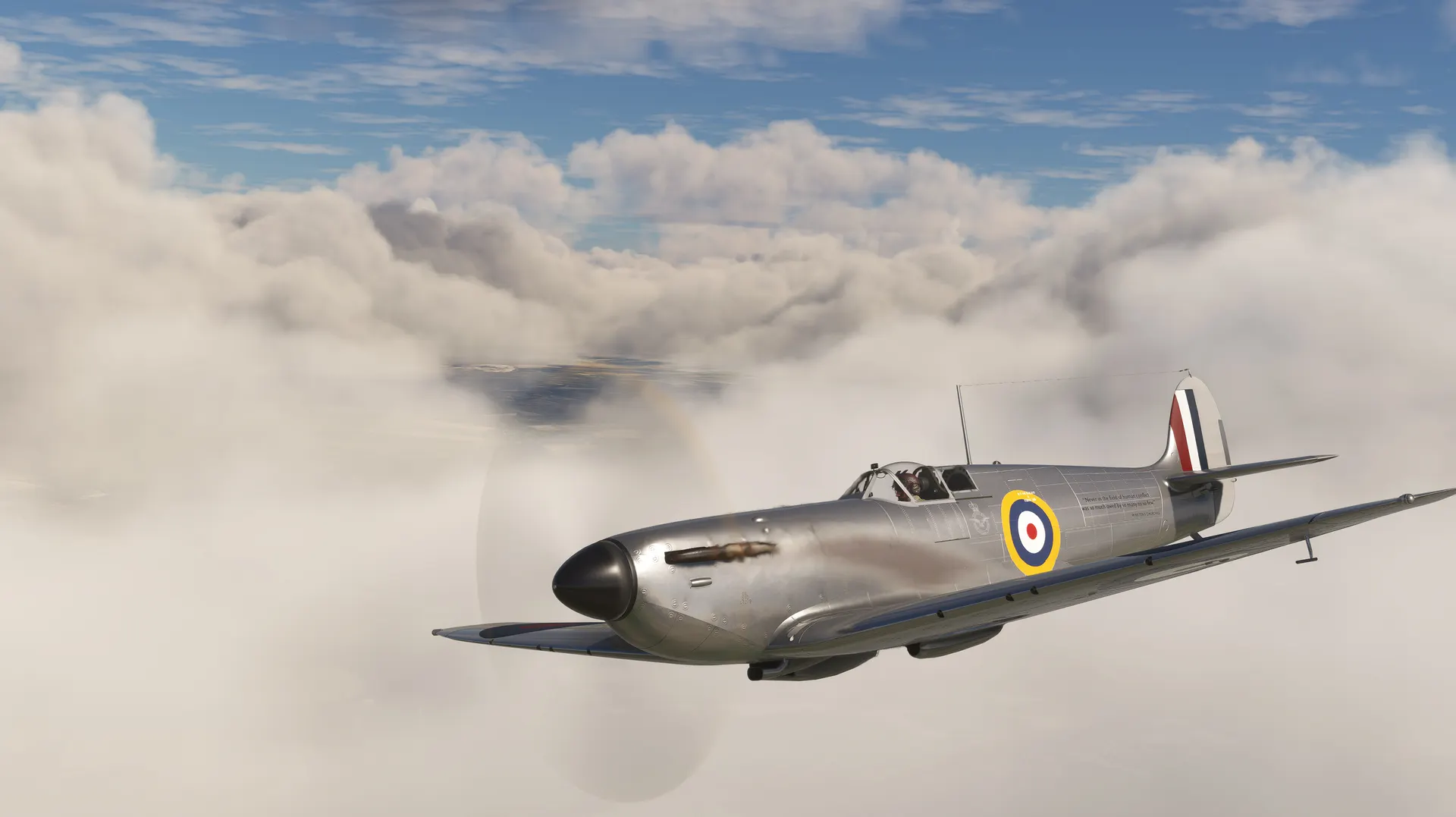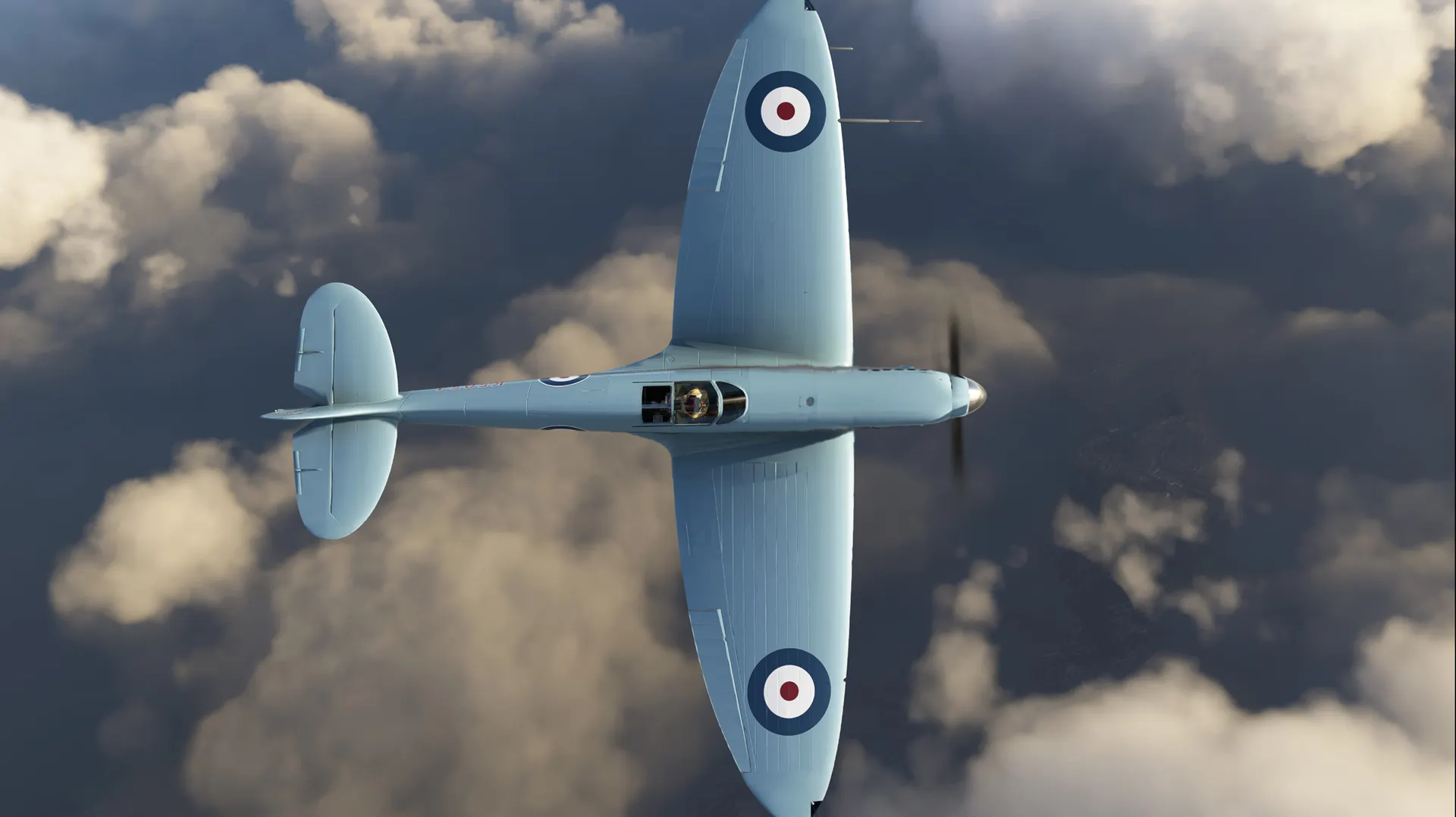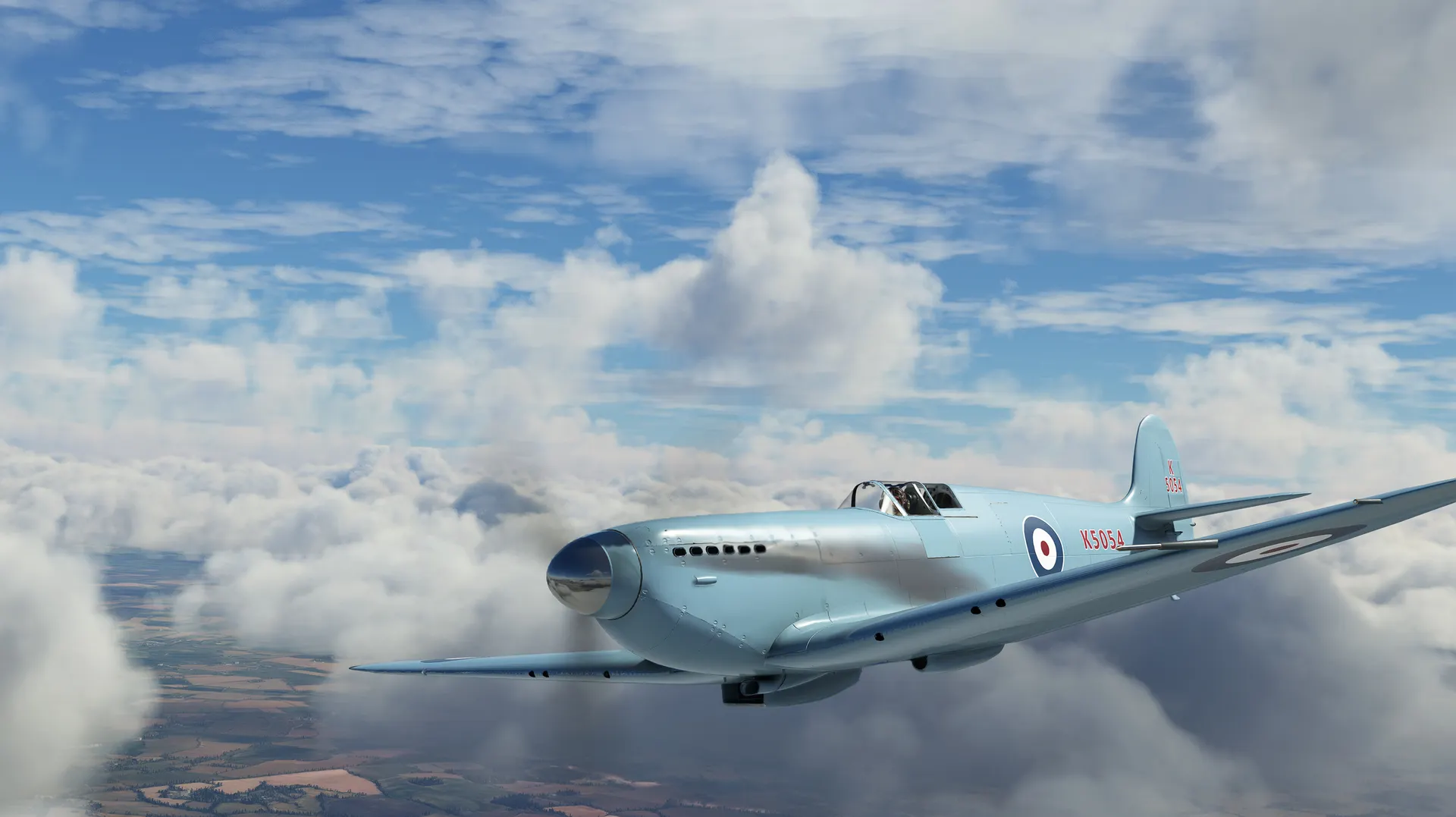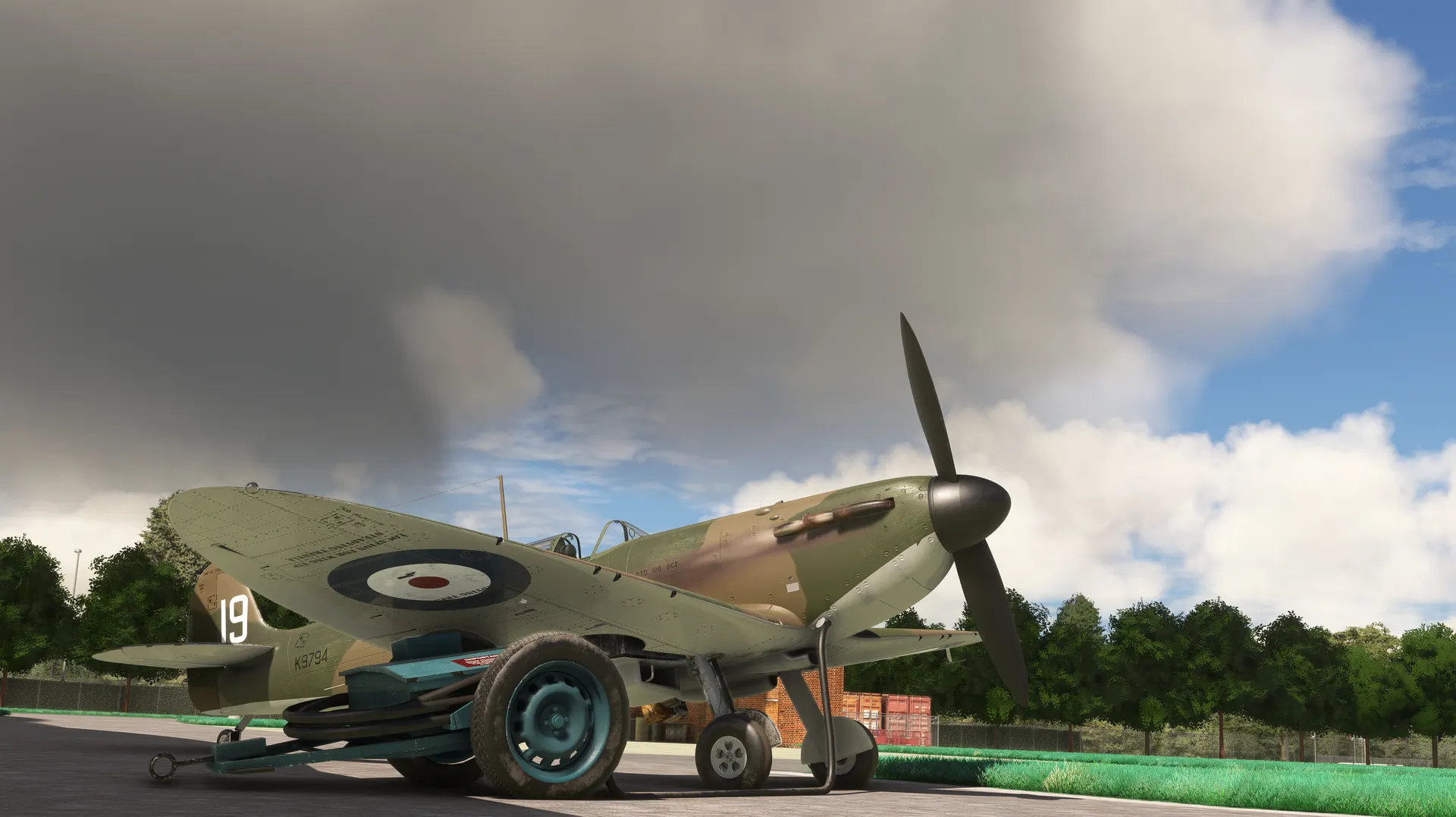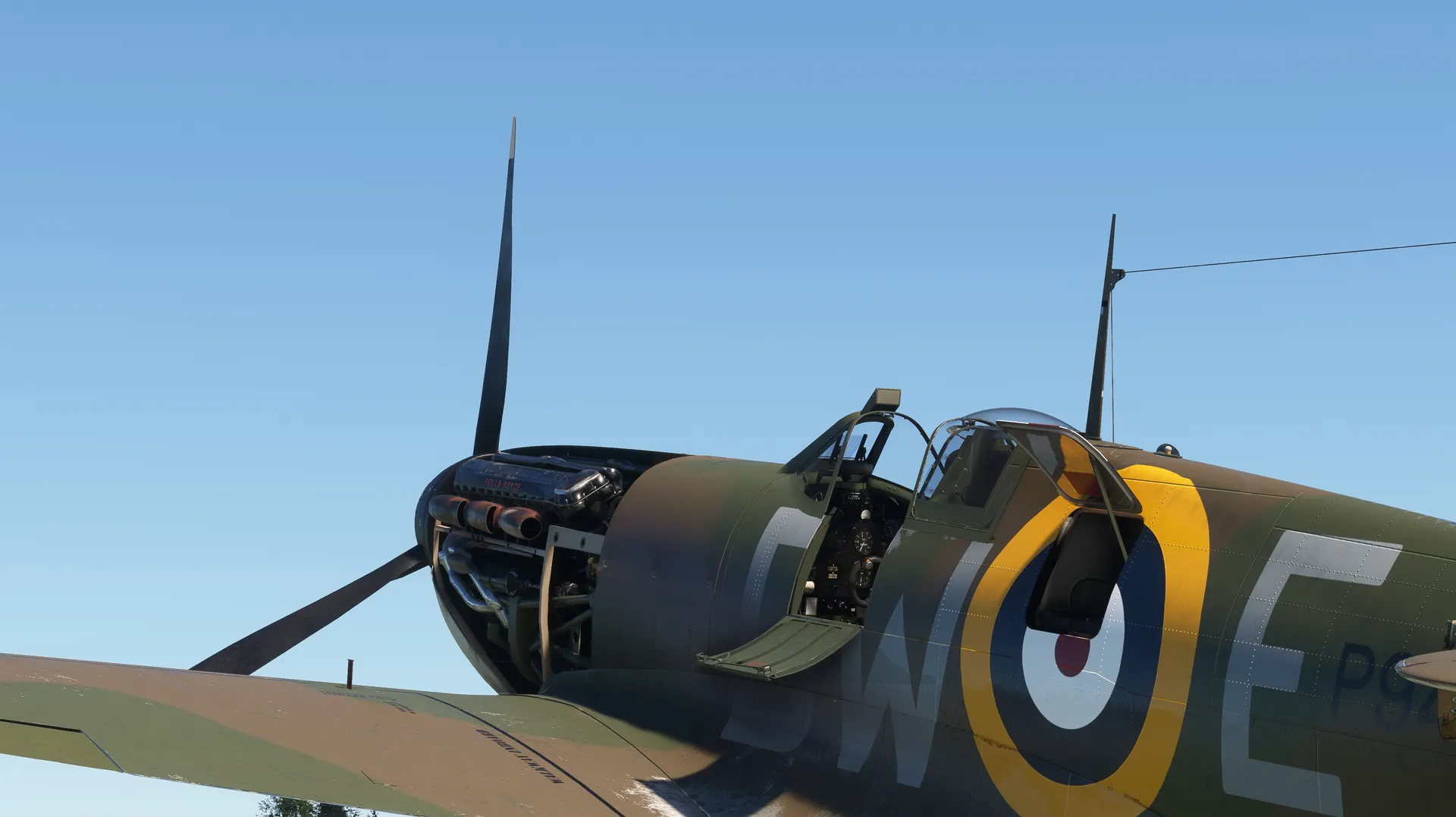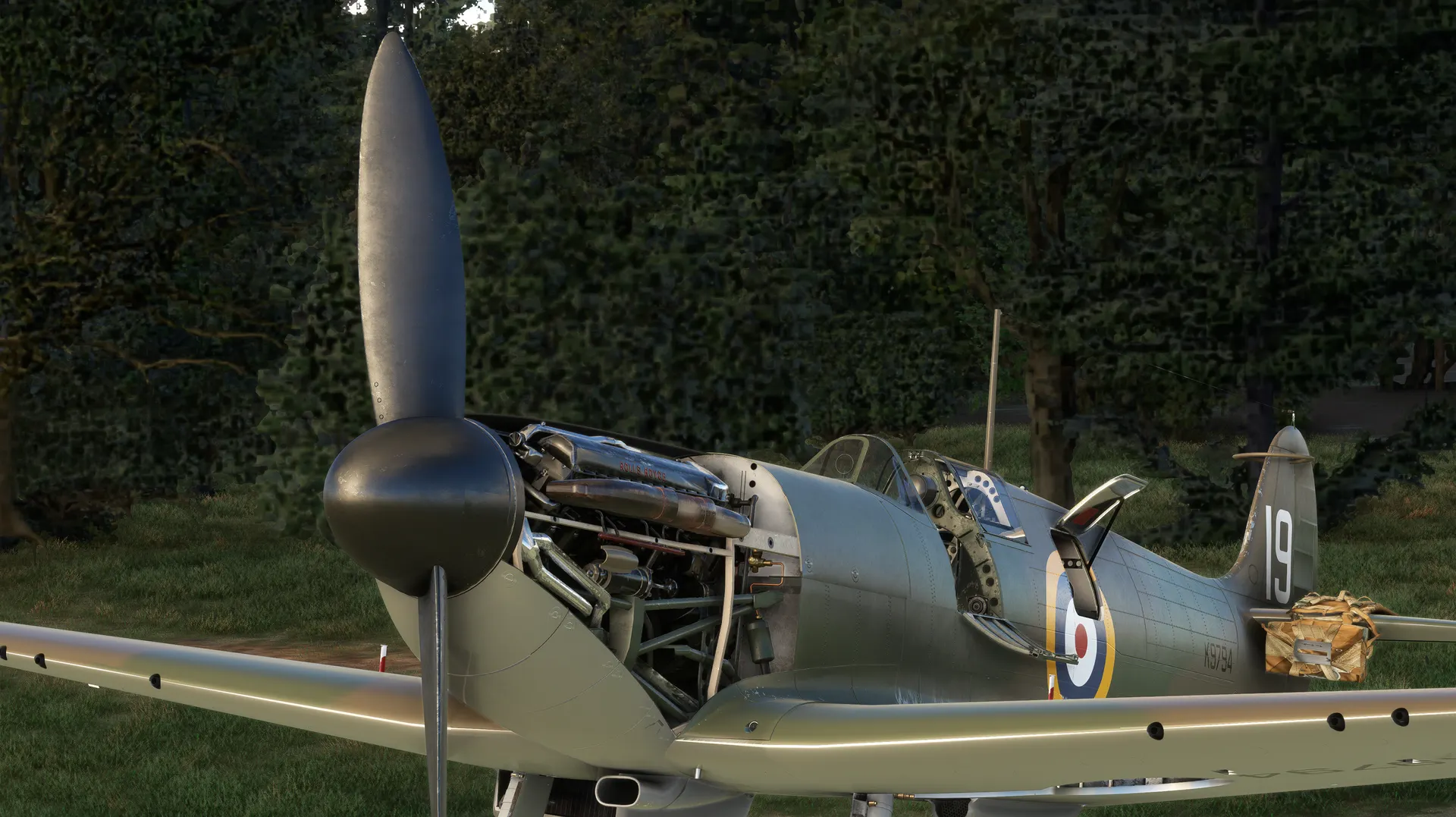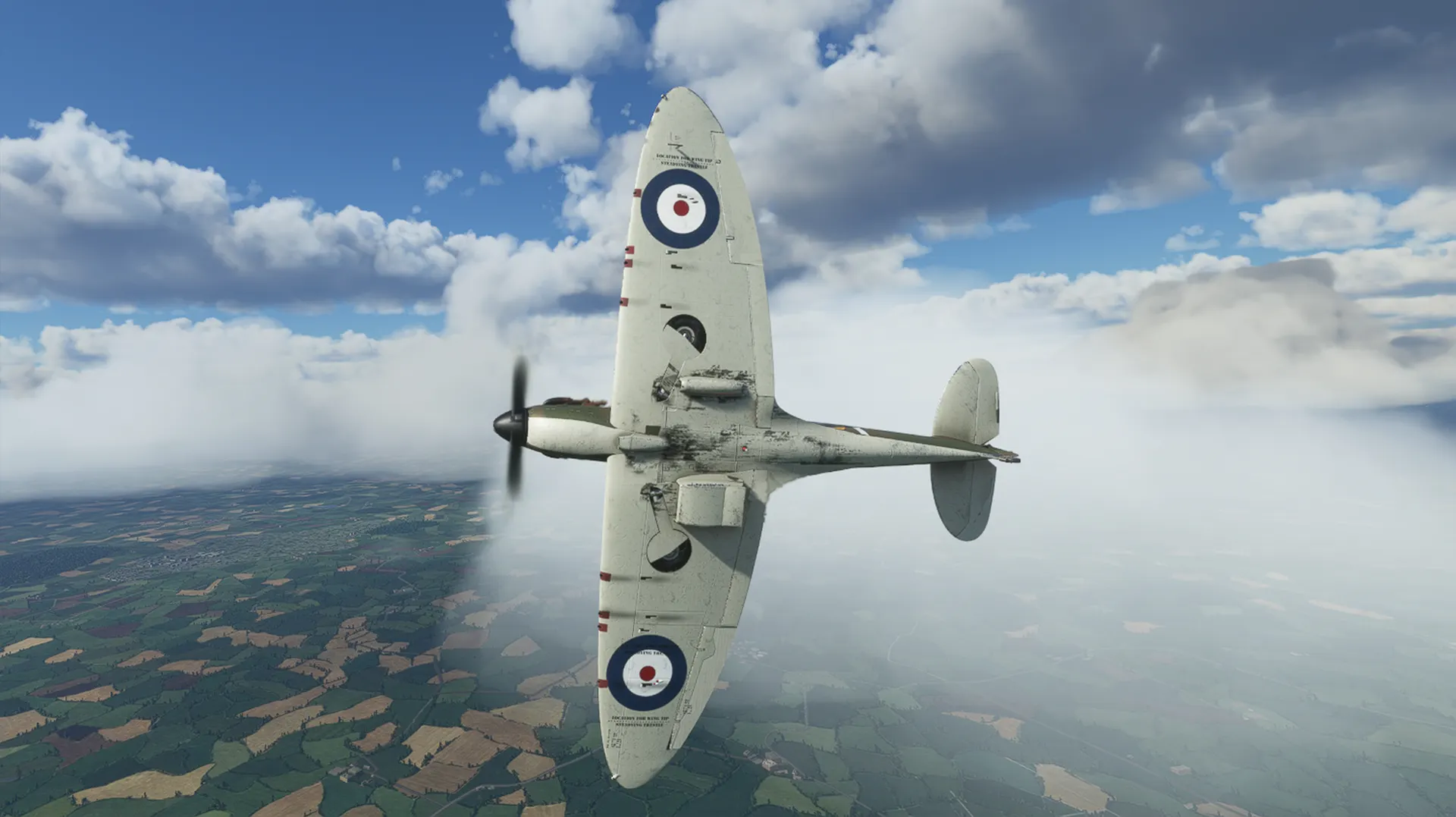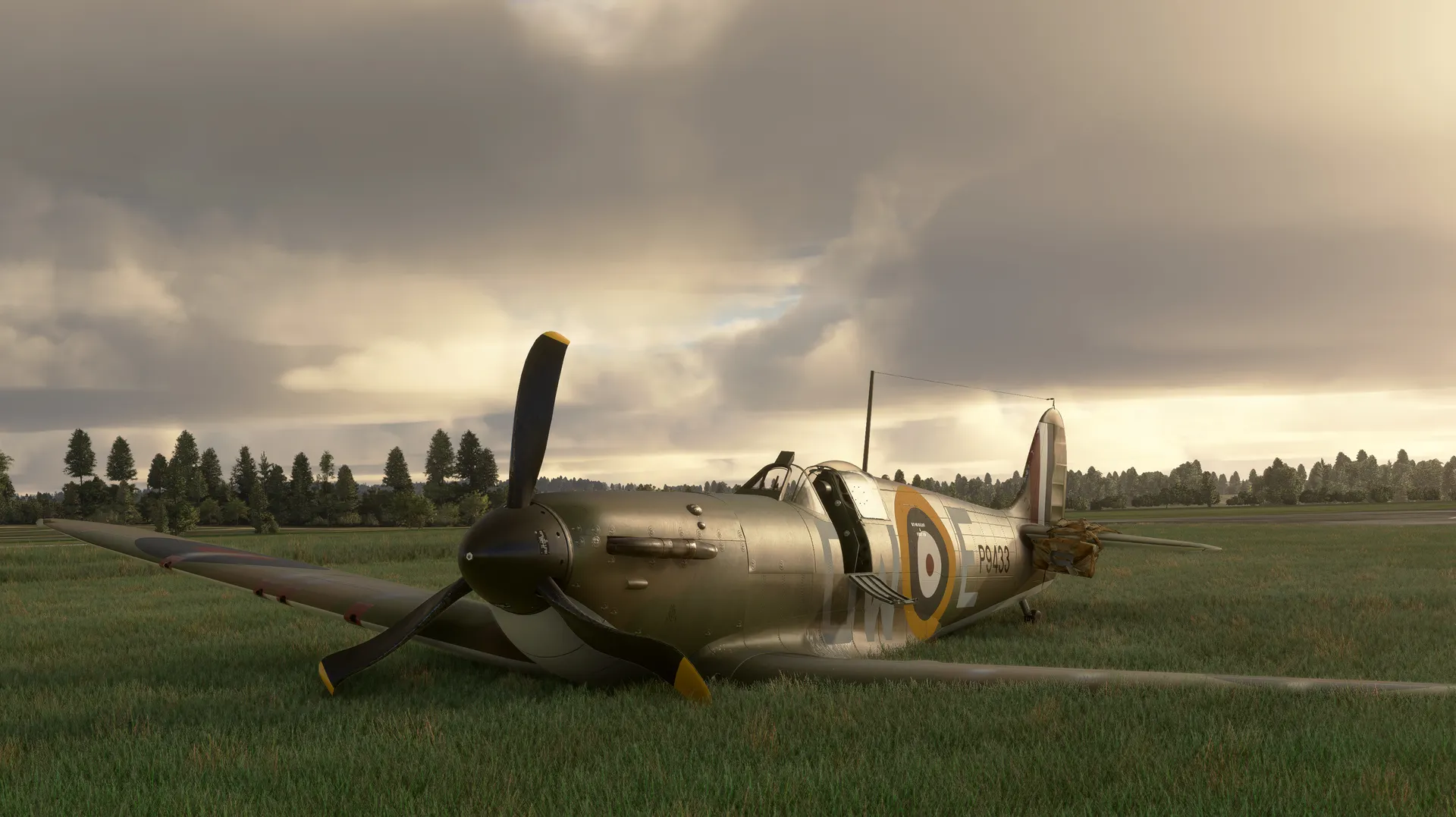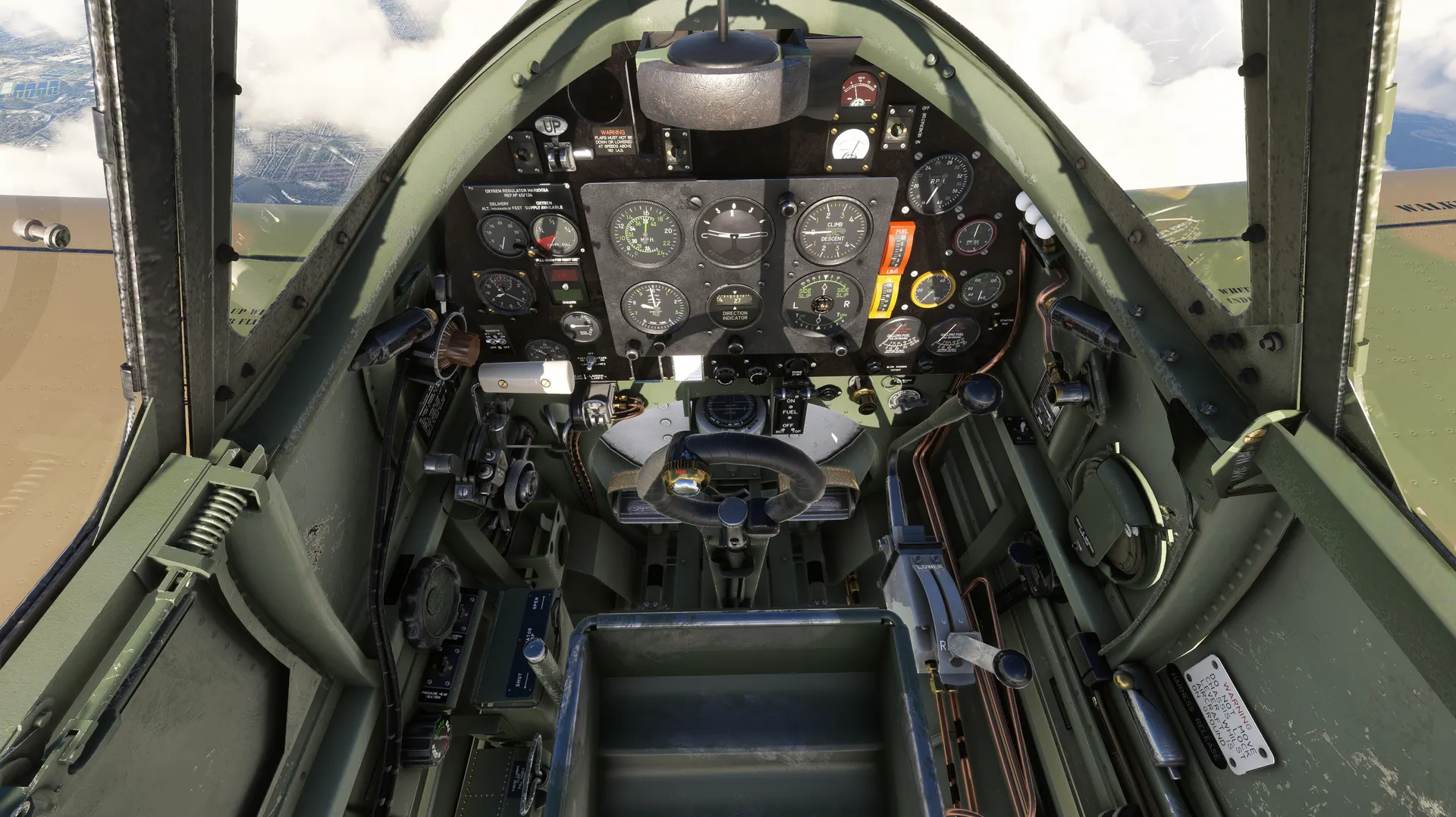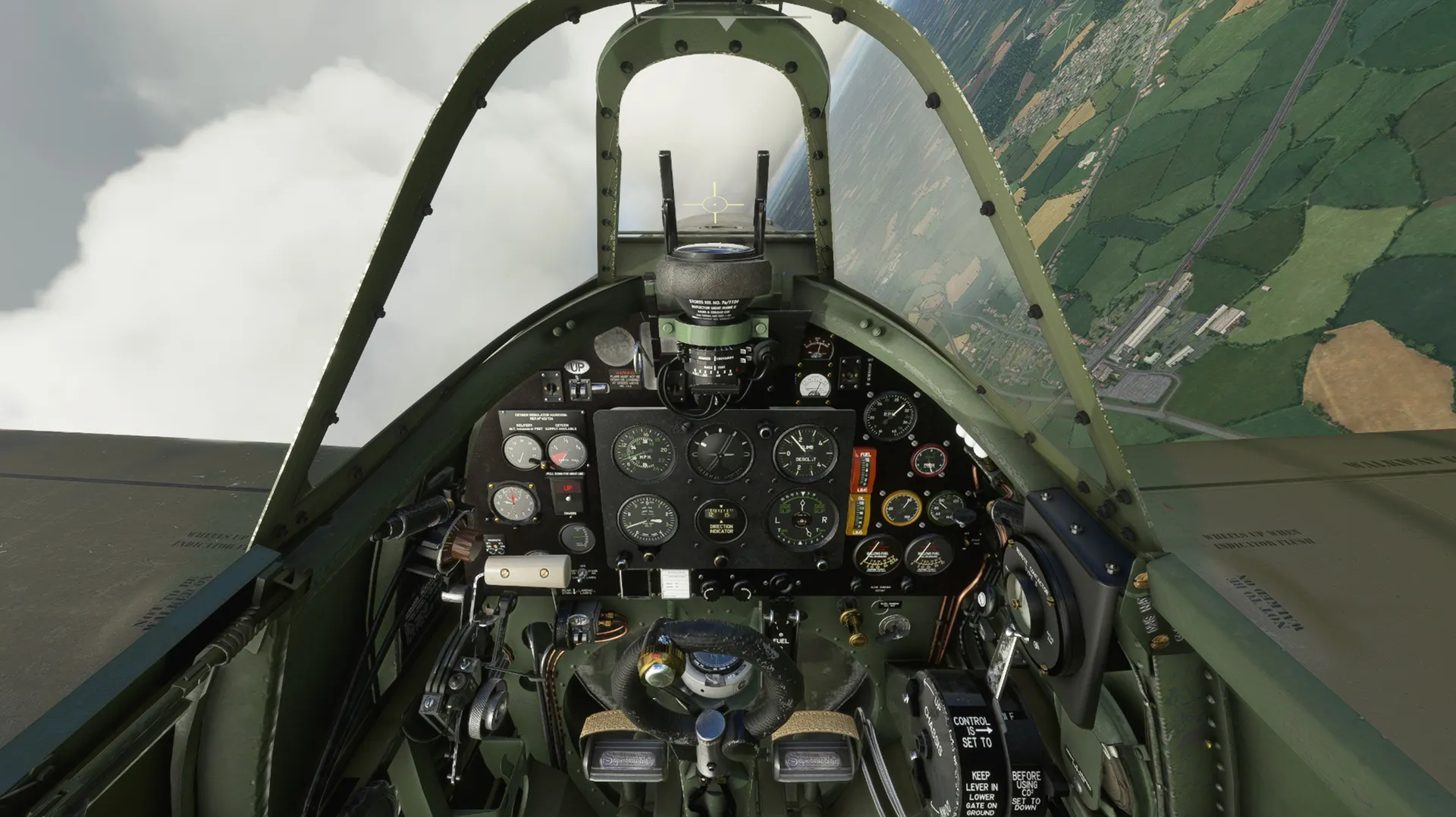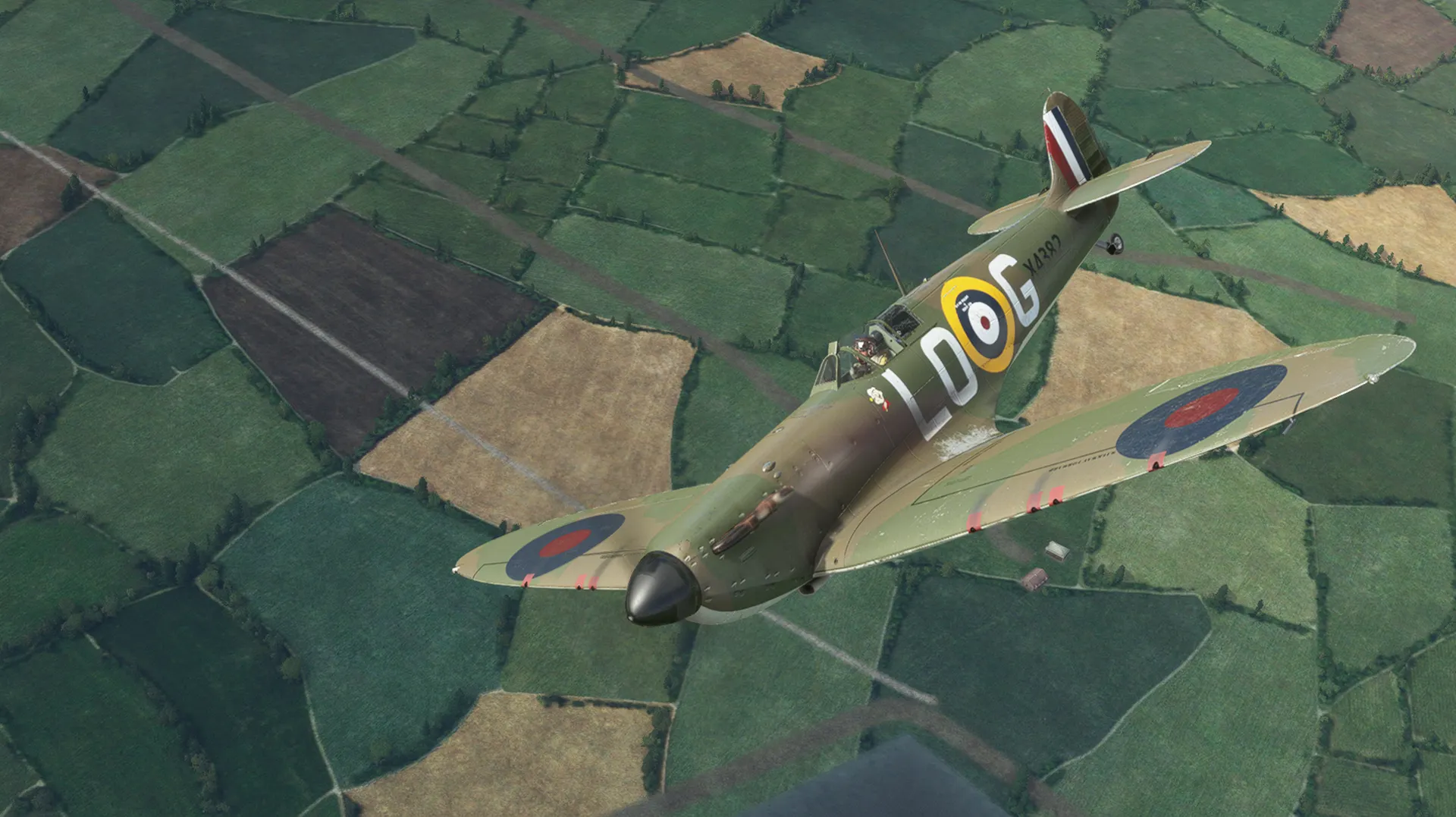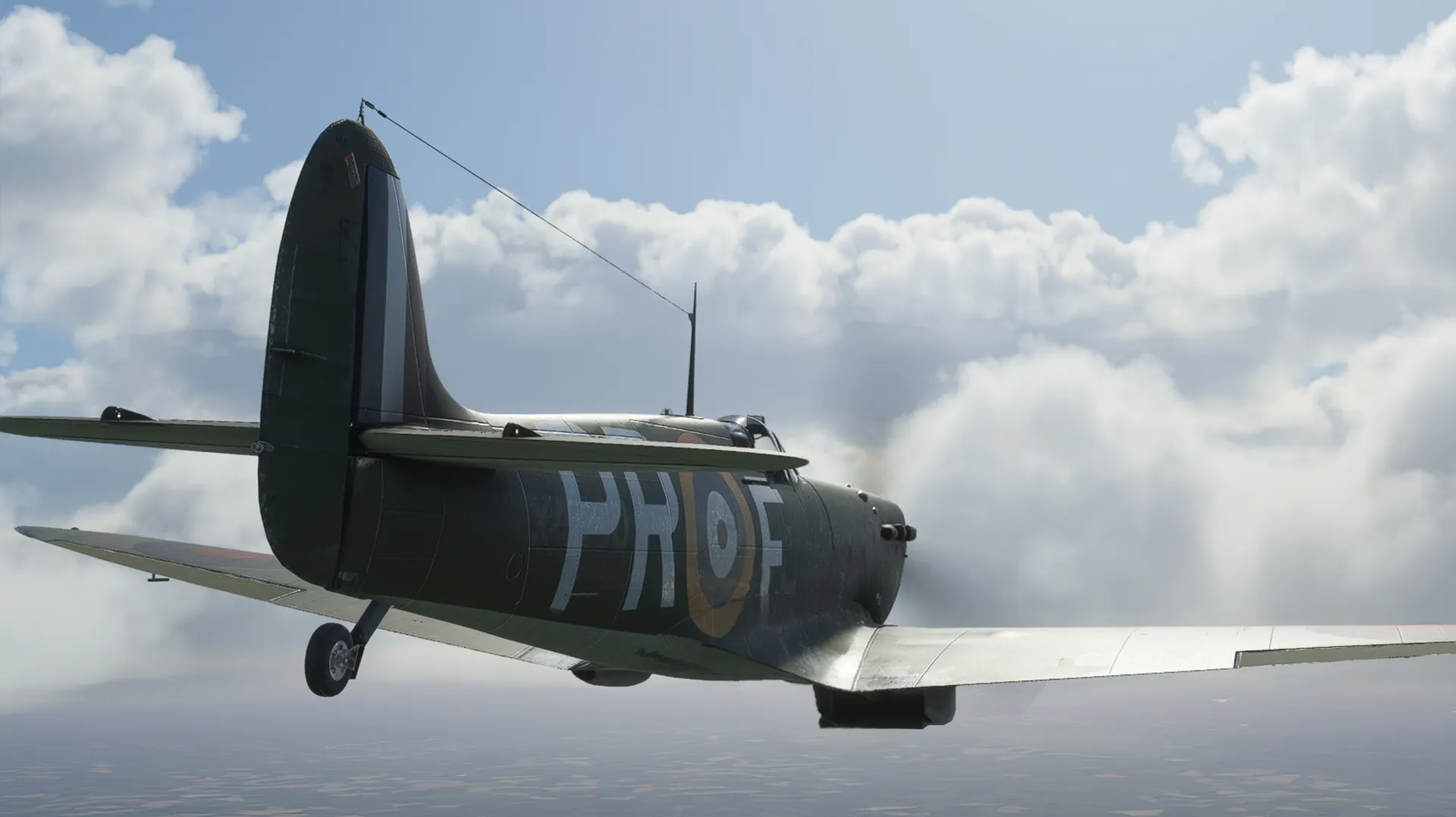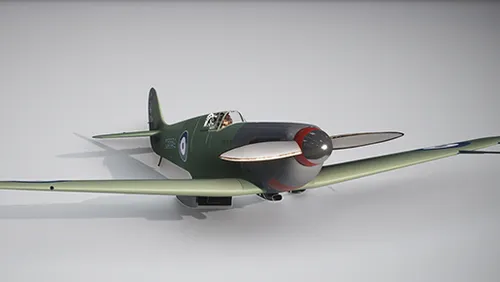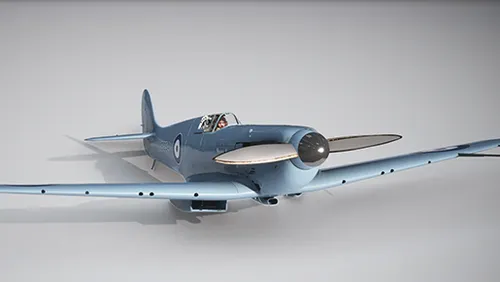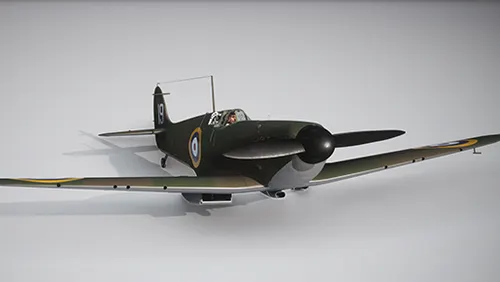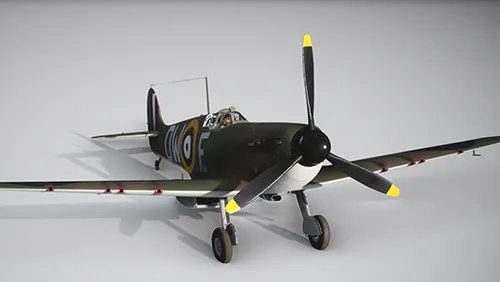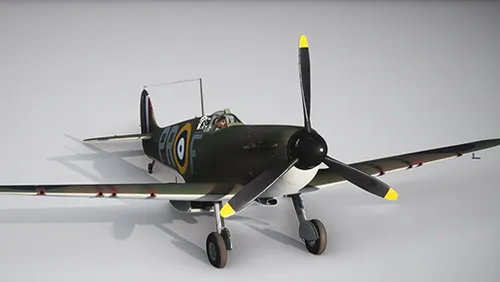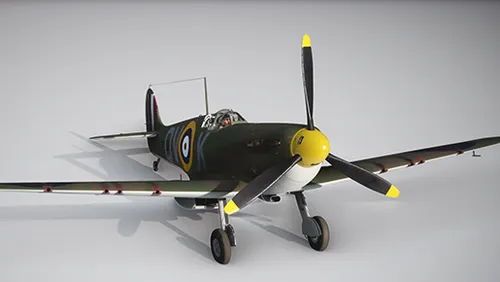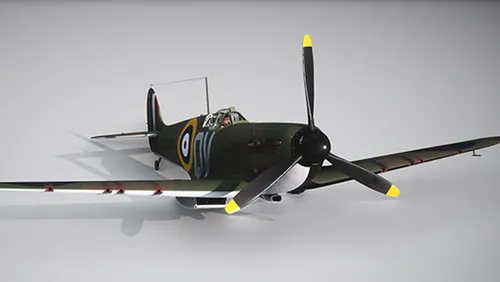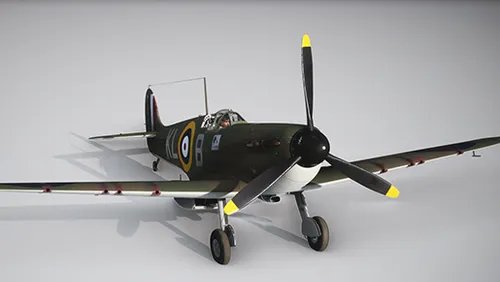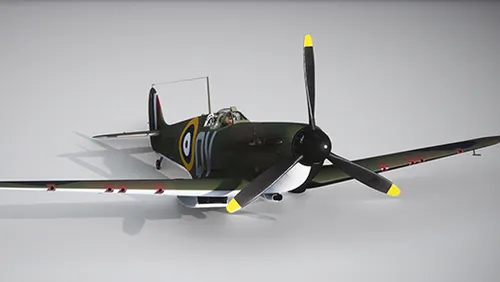- USD 36.99
- View more offers at FS Addon Compare
- Added: June 2, 2025
- Updated: July 3, 2025
The Prototype
On the morning of the 5th of March, 1936, at Eastleigh aerodrome in England, the big V12 Rolls Royce Merlin of Spitfire prototype K5054 roared as Capt. Joseph “Mutt” Summers opened the throttle of Reginald Mitchell’s inspired design and took off into a 35 degree crosswind.
Thus began a love affair between pilot and aeroplane that would last for the next 70 years and more.
The prototype airframe was unpainted save for a coat of yellow/green primer on parts of the fuselage and wings. This remains a much disputed area as it is actually unclear just how the airframe was finished except for a few references such as Jeffrey Quill’s recollection that it was in “Works finish.. that is to say it was unpainted except for its primer coats…” The landing gear was locked down and carried no spats or covers. There was a simple curved plexiglass windscreen and flat-topped canopy. The airframe was fitted with a basic tailskid and carried no armament or radio equipment.
After making his first and perfect three-point landing, Summers was reputedly heard to say “leave everything as it is” others have recorded his words as “touch nothing”. Whatever he did say passed into Spitfire legend. Those that can recollect or retell the story believe that actually what happened was that he left the aircraft (probably for a comfort stop!) and simply asked that nothing be touched until he got back. History, rather apocryphally records it as meaning that the design was perfect and that no further work was required. In reality, the prototype was to be steadily upgraded with a broad range of improvements, alterations and additions over the course of its career.
The Early Mk1 The first production Spitfires were delivered to 19 Squadron RAF in early 1938. These early models were powered by the RR Merlin II, developing 1020hp and turning a fixed-pitch wooden two-blade Watts propeller. These airframes had no armour protection for the pilot, simple single-pane Perspex windscreens and the flat top canopy of the prototype. The landing gear was manually operated by a long “wand”-like lever used to pump the hydraulic system. Nervous or novice pilots inevitably wrapped their knuckles on the cockpit side as they furiously pumped the lever. This resulted in a condition known as “Spitfire knuckle”. Eight Browning machine guns were fitted in the wings and aligned to converge on a single fixed point ahead of the aircraft. This created a murderous concentration of fire and little would survive a direct hit from a skilful Spitfire pilot. Some more experienced pilots had the guns of their machines trained to converge at less than 200 yards to be sure of a “kill”. It was in this form that the Spitfire, along with the Hawker Hurricane, was to embark with the British Expeditionary Force to France to repel the German invasion of that country.
The Spitfire Mk1A After the evacuation of Dunkirk, a vast amount of energy was put into the improvement of the Spitfire. To battle the coming storm of enemy attacks would require competent machines not only capable of shooting down the bomber hordes but also their fighter escorts. Swarms of highly manoeuvrable Messerschmitt BF109s that could outpace the best frontline fighters of the RAF. The Spitfire was able to match the Messerschmitt s at higher altitudes. The speed of the Spitfire meant that ground controllers could vector large numbers of aircraft to given rendezvous points in time to climb to altitude and therefore get the ‘drop’ on the enemy.
By now the airframe was fitted with thick-plate armour for the pilot, armour-plated glass windscreens and a new “bubble” canopy for increased visibility and headroom. Up front, an improved Merlin engine developed 1030hp and turned a variable pitch, metal three-bladed Hamilton or Rotol propeller.
